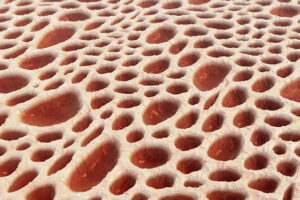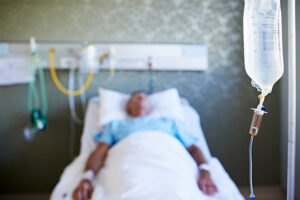Oncology
Multiple Myeloma
Expanding Horizons: Antibody-Based Therapy in Multiple Myeloma
Overview
Promising data on the use of antibody-based regimens in both newly diagnosed and relapsed/refractory multiple myeloma were presented at the 62nd ASH Annual Meeting and Exposition. The strength of the data for the CD38-directed monoclonal antibodies continued to be reported, and this has been an area of incredibly active research.
Our featured expert, Paul G. Richardson, MD, was interviewed by Conference Reporter Editor-in-Chief Tom Iarocci, MD, and Dr Richardson’s clinical perspectives on these data are presented here.
Paul G. Richardson, MD
|
|
“Remarkably promising data with antibody-based regimens for multiple myeloma have emerged at ASH 2020 across a variety of treatment settings.”
Remarkably promising data with antibody-based regimens for multiple myeloma have emerged at ASH 2020 across a variety of treatment settings. In the relapsed and refractory space, antibody-drug conjugates were among the newer agents being considered. Belantamab mafodotin is a B-cell maturation antigen–directed antibody-drug conjugate that received US Food and Drug Administration approval for the treatment of relapsed or refractory multiple myeloma. It is an off-the-shelf option and is thus very practical. In the ongoing DREAMM-5 trial, belantamab mafodotin is being evaluated in combination with a variety of other platforms, including other novel agents such as oral approaches, to meaningfully increase B-cell maturation antigen expression and therefore enhance treatment effect (abstract 2299). It is important to note that the risk of corneal toxicity (ie, keratopathy) with the use of this agent is real, and it requires careful coordination with an ophthalmologist. Other antibody-drug conjugates are in development for multiple myeloma, and encouraging data presented at ASH 2020 are providing momentum to this space.
Strong data for the CD38-directed monoclonal antibodies, an area of incredibly active research, continued to be reported. For instance, in the newly diagnosed setting, an update of our phase 2 GRIFFIN study was of particular interest. Results of the GRIFFIN study, which was led by my colleague Peter M. Voorhees, MD, had previously shown the value of antibody-based quadruplet therapy (ie, daratumumab with bortezomib, lenalidomide, and dexamethasone [so-called RVD-Dara]) in a transplant-eligible, newly diagnosed population at its primary end point (stringent complete response at the end of consolidation). As reported by our partner Jonathan L. Kaufman, MD, in abstract 549, a benefit was also seen in the intention-to-treat population for the daratumumab-containing arm at the 12 months of maintenance therapy cutoff, a secondary end point. We saw minimal residual disease (MRD) negativity (10-5) climb to 62.5% at this cutoff, whereas it had been 51% after consolidation and a median follow-up of 22.1 months. The key takeaway was that the quadruplet appears to make a big difference compared with the triplet without the antibody. It was very exciting to see that the quadruplets can really magnify quality of response over time, plus these combinations appear to do so independent of transplant and with minimal additive toxicity.
Also, in the newly diagnosed/maintenance therapy setting, the anti-SLAMF7 agent elotuzumab is an underappreciated antibody that can, in my view, have a larger role, particularly because it is so well tolerated. An update of a phase 2 study showed that elotuzumab plus lenalidomide as maintenance therapy post autologous stem cell transplantation was well tolerated and was associated with an improvement in the quality of response among 38% of patients (abstract 1394).
With the success of upfront quadruplets in the transplant-eligible population, an important question then becomes: To what extent does high-dose melphalan (HDM) contribute to that success? HDM followed by autologous stem cell transplantation can significantly improve progression-free survival in appropriately selected patients, but there may be costs to this approach that are not completely understood.
In abstract 61, Samur et al reported a highly significant accumulation of mutations following HDM therapy and a significant shift to more subclonal mutations at relapse, even in those achieving MRD negativity before ultimately relapsing. Long-term follow-up data from the IFM 2009 study were presented in abstract 143, and no difference in overall survival with early vs late transplantation was observed, suggesting that there was no penalty with later transplantation or with not doing it at all, which occurred in approximately 30% of patients. The other finding from this study was that MRD negativity was a strong predictor of outcome, regardless of the treatment arm. So, I believe that, although HDM therapy is necessary in some patients to achieve maximal response and long-term clinical benefit, it may not be as helpful in others; for some patients, it is possible that it might be kept wisely in reserve.
Finally, there were a number of additional insights reported in the relapsed and refractory setting. As relates to the 2 CD38-directed monoclonal antibodies daratumumab and isatuximab, this is an area of very active research because it is still unclear which agent is best for which individuals and at which time in their disease course, especially as daratumumab is now increasingly used in first-line treatment and as part of maintenance. For instance, isatuximab may be preferable in the relapse setting in patients with certain clinical features, such as extramedullary disease, but that remains to be confirmed. One study from ASH 2020 found that isatuximab was effective as part of pomalidomide-based and other agent-based combination therapies in patients who had received prior anti-CD38 therapy with daratumumab (abstract 1371). The optimization of retreatment with anti-CD38 monoclonal antibodies in daratumumab-refractory patients, such as with the use of panobinostat and other approaches, is an ongoing area of study.
References
Becnel MR. Horowitz SB, Thomas SK, et al. Descriptive analysis of isatuximab use following prior daratumumab in patients with relapsed/refractory multiple myeloma [abstract 1371]. Abstract presented at: 62nd American Society of Hematology Annual Meeting and Exposition; December 5-8, 2020.
Kaufman JL, Laubach JP, Sborov D, et al. Daratumumab (DARA) plus lenalidomide, bortezomib, and dexamethasone (RVd) in patients with transplant-eligible newly diagnosed multiple myeloma (NDMM): updated analysis of GRIFFIN after 12 months of maintenance therapy [abstract 549]. Abstract presented at: 62nd American Society of Hematology Annual Meeting and Exposition; December 5-8, 2020.
Perrot A, Lauwers-Cances V, Cazaubiel T, et al. Early versus late autologous stem cell transplant in newly diagnosed multiple myeloma: long-term follow-up analysis of the IFM 2009 trial [abstract 143]. Abstract presented at: 62nd American Society of Hematology Annual Meeting and Exposition; December 5-8, 2020.
Richardson PG, Nooka A, Quach H, et al. DREAMM-5 platform trial: belantamab mafodotin (Belamaf) in combination with four different novel agents in patients with relapsed/refractory multiple myeloma (RRMM) [abstract 2299]. Abstract presented at: 62nd American Society of Hematology Annual Meeting and Exposition; December 5-8, 2020.
Samur MK, Roncador M, Aktas-Samur A, et al. High-dose melphalan significantly increases mutational burden in multiple myeloma cells at relapse: results from a randomized study in multiple myeloma [abstract 61]. Abstract presented at: 62nd American Society of Hematology Annual Meeting and Exposition; December 5-8, 2020.
Thomas SK, Shah JJ, Morin A, et al. Update of a phase II study of lenalidomide-elotuzumab as maintenance therapy post-autologous stem cell transplant (AuSCT) in patients (pts) with multiple myeloma (MM) [abstract 1394]. Abstract presented at: 62nd American Society of Hematology Annual Meeting and Exposition; December 5-8, 2020.
Voorhees PM, Kaufman JL, Laubach J, et al. Daratumumab, lenalidomide, bortezomib, and dexamethasone for transplant-eligible newly diagnosed multiple myeloma: the GRIFFIN trial. Blood. 2020;136(8):936-945. doi:10.1182/blood.2020005288
This information is brought to you by Engage Health Media and is not sponsored, endorsed, or accredited by the American Society of Hematology.











